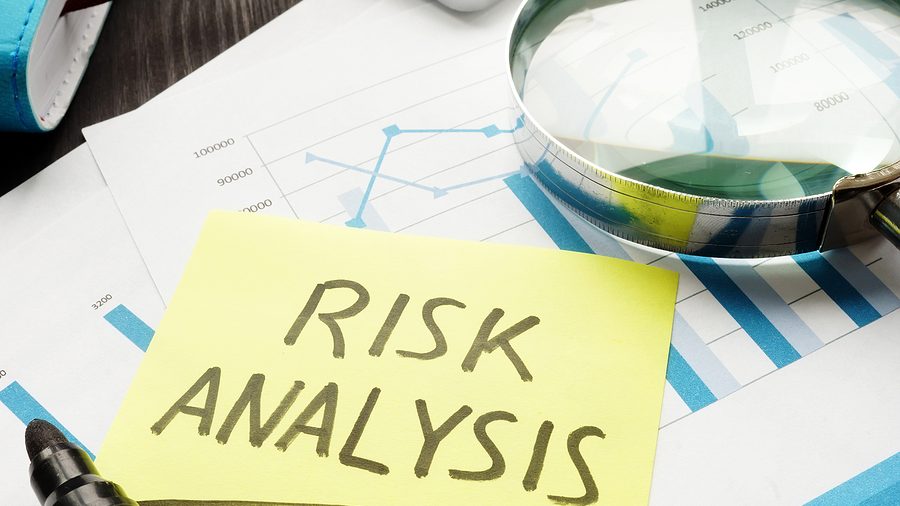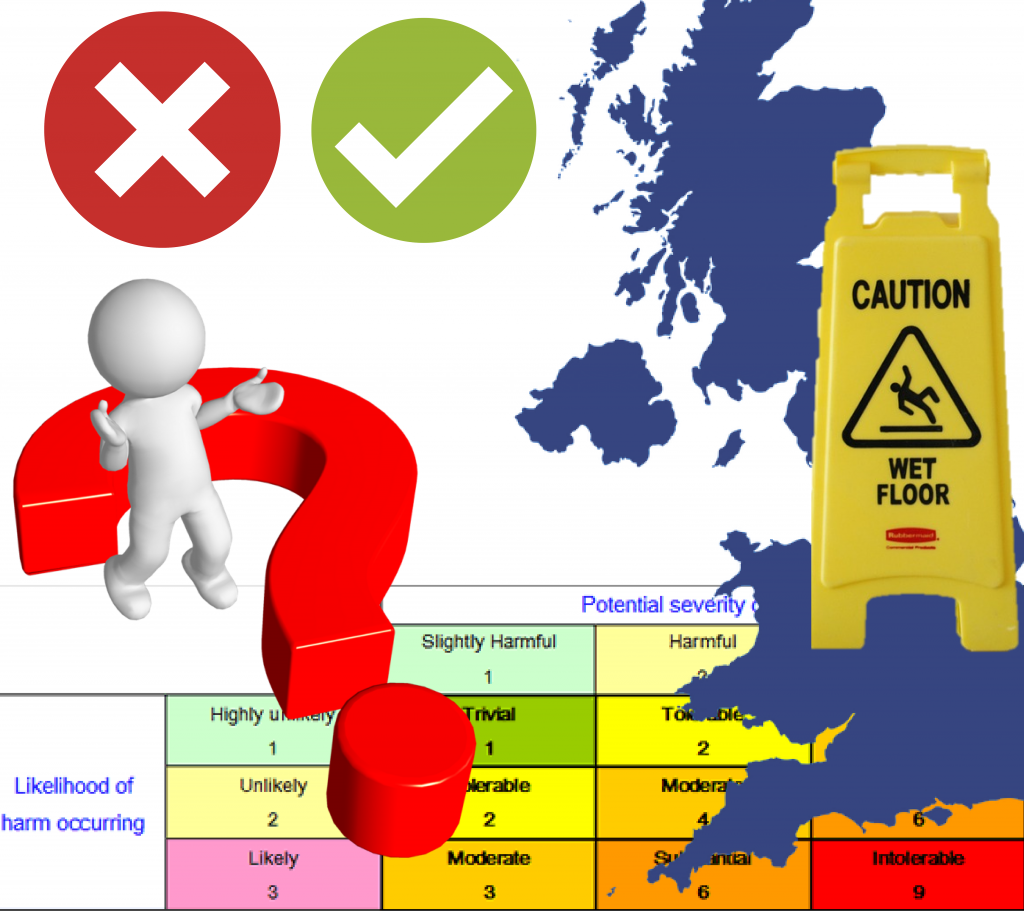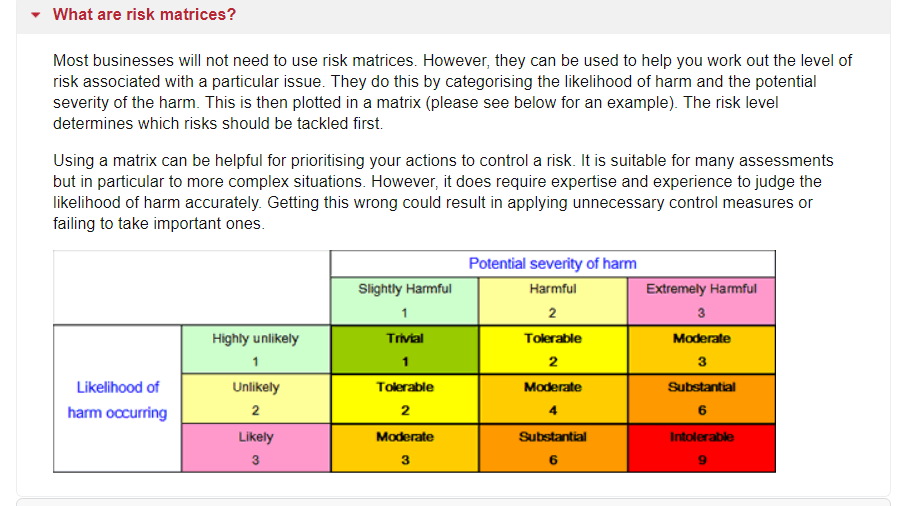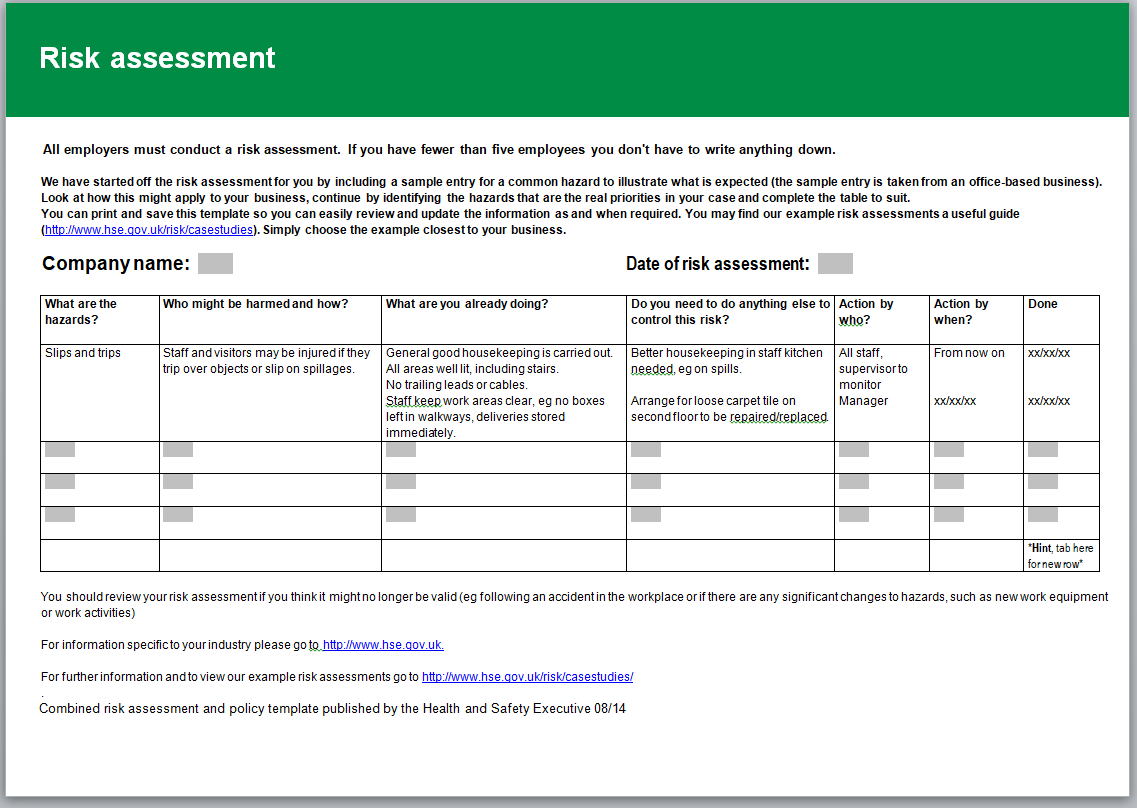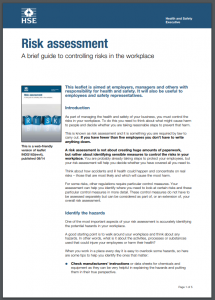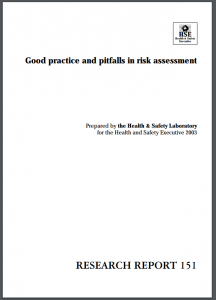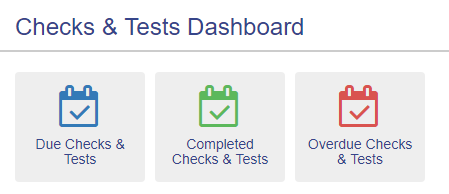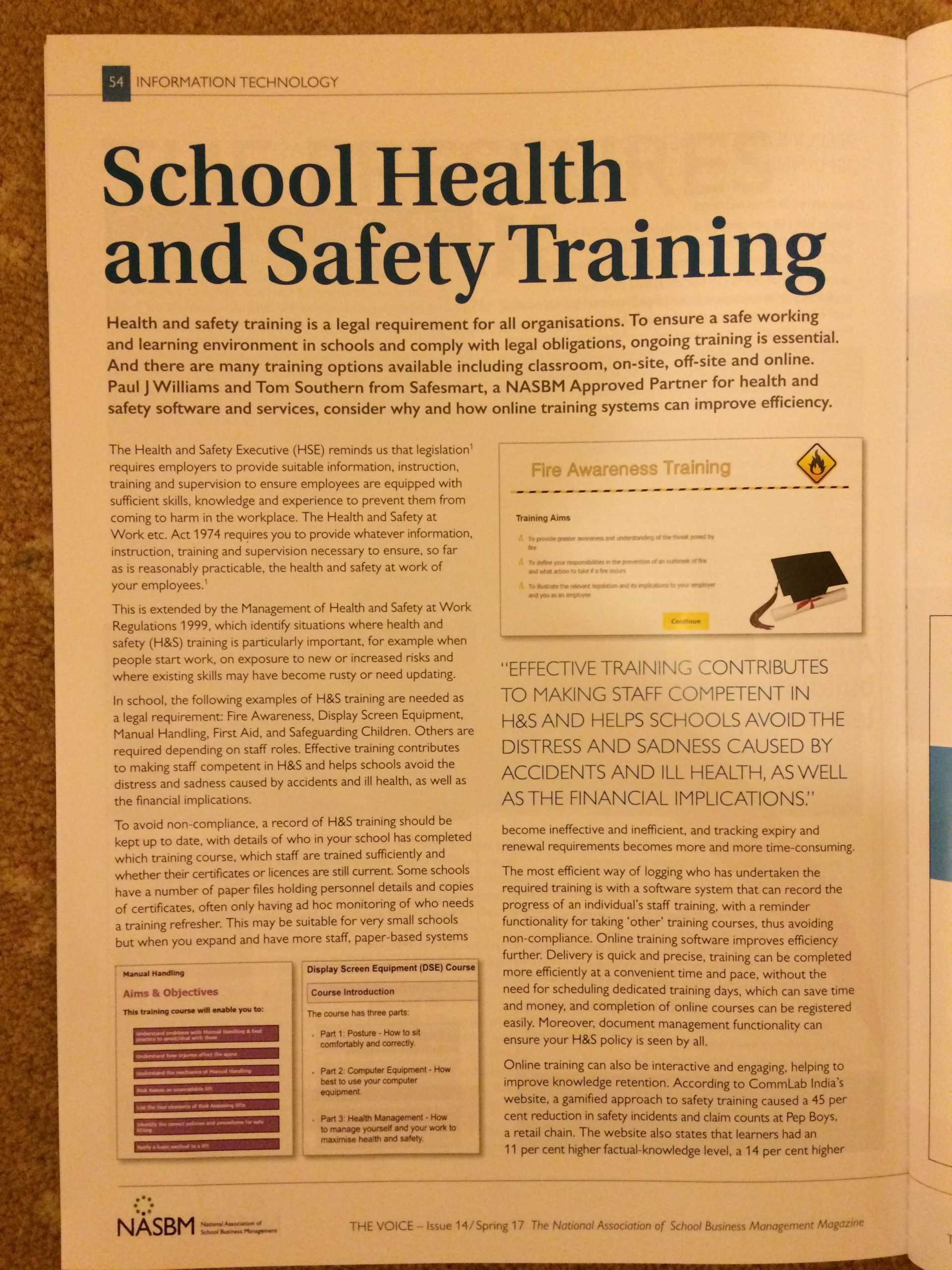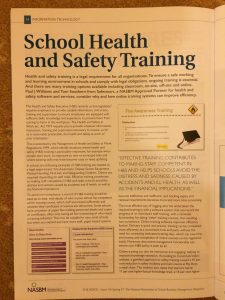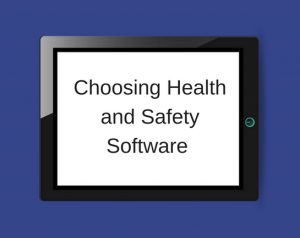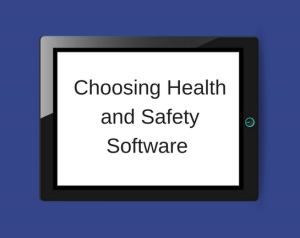DSE stands for ‘Display Screen Equipment‘.
This article provides insight into DSE Training and answers frequently asked questions regarding UK legislation.
For more information about our DSE online training course on Smartlog, click here.
The HSE state that DSE Training is a legal requirement for all staff who look at desktop computer screens, laptops, mobile phones, tablets and any other appropriate display screen equipment ‘for continuous or near-continuous spells of an hour’ [1] These people are called DSE users.
It is the legal duty of all employers to provide Display Screen Equipment Training.
Failure to provide adequate DSE training is a breach of DSE regulations meaning employers may face prosecution and fines. Providing DSE training also helps protect you from liability claims from employees; for example perhaps regarding back pain from working position.
There are various benefits of DSE Training such as reducing the likelihood of postural and visual problems, as well as fatigue and stress. When a work environment is more comfortable, productivity and employee satisfaction is also likely to increase.
The Health and Safety Executive (HSE), the UK authority for health and safety state legal requirements about Display Screen Equipment in document L26 the Health and Safety (Display Screen Equipment) Regulations 1992 as amended by the Health and Safety (Miscellaneous Amendments) Regulations 2002.[2]
What is DSE Training?
DSE training stands for display screen equipment training. It is a form of training to inform DSE users how best to use the equipment and how best to position themselves in relation to the equipment. Its purpose is to lower the risk of posutural and visual problems as well as fatigue and stress. [3]
Is DSE training a legal requirement?
Yes the Health and Safety Executive (HSE) document L26, Health and Safety (Display Screen Equipment) Regulations 1992 as amended by the Health and Safety (Miscellaneous Amendments) Regulations 2002 states on page 8 that display screen equipment training is required for all staff using display screen equipment
‘for continuous or near-continuous spells of an hour’. [1]
Who does the HSE regard as DSE users?
On p8 of HSE document L26.
The HSE state that people in these situations need DSE Training:
‘It will generally be appropriate to
classify the person concerned as a user or operator if they:
(a) normally use DSE for continuous or near-continuous spells of an hour or
more at a time; and
(b) use DSE in this way more or less daily; and
(c) have to transfer information quickly to or from the DSE;
and also need to apply high levels of attention and concentration; or are highly
dependent on DSE or have little choice about using it; or need special training
or skills to use the DSE.’ [1]
What is classed as DSE Equipment?
In document L26 the HSE have stated that:
‘ “display screen equipment” means any alphanumeric or graphic display screen ’ [4]
The most common type of display screen equipment in the work environment are desktop computers. It must also be remembered that laptops, mobile phones, tablets and Point of Sale computer tills or tablet size screen displays are also classed as display screen equipment.
What is not classed as DSE Equipment?
The HSE mention in general that tablet style interfaces for public usage and not workstations for individuals are exempt as well as small screen old style cash registers. However it must be remembered that work station areas Point of Sale (POS) systems and tills areas with tablet of desk top computer screens do come under DSE Regulations and therefore DSE training applies in accordance with prolonged usage; ‘for continuous or near-continuous spells of an hour’. [1]
On page 11 of HSE document L26 it states that:
Nothing in these Regulations shall apply to or in relation to –
(a) drivers’ cabs or control cabs for vehicles or machinery;
(b) display screen equipment on board a means of transport;
(c) display screen equipment mainly intended for public operation;
(d) portable systems not in prolonged use;
(e) calculators, cash registers or any equipment having a small data or
measurement display required for direct use of the equipment; or
(f) window typewriters.
21 Where any of the exclusions in regulation 1(4) apply, none of the duties
imposed by the DSE Regulations will apply to or in connection with the use of the
equipment that is excluded. However, the proviso at paragraph 8 applies here too.
Employers should still ensure that, so far as is reasonably practicable, the health
and safety of those using the equipment are not put at risk. The general duties on
employers and others under the HSW Act, and other general health and safety
legislation (see paragraphs 6-8), are still applicable and particular attention should
be paid to ergonomics in this context. Ergonomics7 is the science of making sure
that work tasks, equipment, information and the working environment are suitable
for every worker, so that work can be done safely and productively. Ergonomic
factors relevant to DSE work are discussed further in Appendix 1.
[5]
Is DSE Training just for desktop computers and work space setup or is it for laptops too?
DSE training does incorporate workstation set up and it is for both desktop computers and laptop computers as well as mobiles and tablets when applicable regarding usage time length.
Regarding laptops in particular in appendix 3 of HSE document L26, p50 it’s written: ‘Portable DSE, such as laptop and notebook computers, is subject to the DSE Regulations if it is in prolonged use.’ [6]
Prolonged use is what’s stated on p8 of the same document ‘for continuous or near-continuous spells of an hour’ [1]
I use a Phone or Tablet, do I need to do DSE training?
On page 13 of HSE document L26 it’s stated that DSE training is needed for mobile phones and tablet (personal organiser) usage when applicable. ‘mobile phones and personal organisers that can be used to compose and edit text, view images or connect to the Internet. Any prolonged use of such devices for work purposes will be subject to the DSE Regulations and the circumstances of such cases will need to be individually assessed.’
The HSE write clearly that ‘It cannot be assumed that such devices, having much of the functionality of full-sized DSE, are excluded because their screens are ‘small’. However, mobile phones that are in prolonged use only for spoken conversation are excluded under regulation 1(4)(e) because their display screens are incidental to this kind of use.’ [7]
Regarding ‘prolonged use’ and ‘individually assessed’. Prolonged use is what’s stated on p8 of the same document, ‘for continuous or near-continuous spells of an hour’. [1]
When does DSE training need to be given?
All current staff who are DSE users need to do DSE training and before new employees start work they need to complete DSE training. This is stated in regulation 6 of HSE document L26. ‘Every employer shall ensure that each user at work in his undertaking is provided with adequate health and safety training whenever the organisation of any workstation in that undertaking upon which he may be required to work is substantially modified.’ [8]
In paragraph 90 of document L26 it’s written:
‘Newly recruited users, and existing employees whose duties are
changing in a way that will make them become users, should be given training
before they start doing the work that will make them a user.’ [9]
Before doing DSE training a risk assessment of the DSE area needs to be done. Answers to FAQs regarding risk assessment can be found here www.hse.gov.uk/risk/faq.htm
How often should risk assessments of DSE workstations be done?
The HSE state online on their webpage titled ‘FAQs – Display Screen Equipment’ that:
‘An assessment should be done when a new workstation is set up, when a new user starts work, or when a substantial change is made to an existing workstation (or the way it is used). Assessments should be repeated if there is any reason to suspect they may no longer be valid – for example, if users start complaining of pain or discomfort.’ [10]
How often should DSE training be done?
The HSE state that DSE training should be done whenever there is a change in the workstation environment, change of DSE device, period of absence from work suffered from related health conditions. To ensure the safety of your employees Safesmart also advise that DSE users complete training at least once a year and also when it is identified that a DSE user is using their equipment in a way that may damage their health.
In paragraph 93 on p30 of HSE document L26 is states that: ‘Training will need to be adapted to the requirements of the particular DSE tasks, be adapted to users’ skills and capabilities and be refreshed or updated as the hardware, software, workstation, environment or job are modified. (A
workstation should be regarded as having been ‘substantially modified’ for the
purposes of regulation 6(2) if there has been a significant change to it, as set out
in paragraph 45.) Where people have been absent from work for long periods,
consider if special training or retraining is needed as part of their rehabilitation,
particularly if they have suffered from visual, musculoskeletal or stress-related ill
health. Organisations should develop systems for identifying the occasions when
any of these needs for training arise.’ [11]
Can our office manager just do the DSE training?
Yes they can however it must be ensured that the content is sufficient to comply with DSE regulations. Online training courses help ensure the completeness and consistency of training to help ensure compliance. Competent training must be provided.
Does the HSE allow online courses for DSE training, no need for on-site training too?
In document indg345[12], the HSE state that they allow online health and safety training and they do not state that you also need on-site training for any type of health and safety training, online training is sufficient. It is only First Aid Training which needs to be practical and on-site. [13]
The training just has to be appropriate and adequate.
In HSE document indg345 the HSE state that:
‘The Health and Safety at Work etc Act 1974 requires you to provide whatever
information, instruction, training and supervision as is necessary to ensure, so far as
is reasonably practicable, the health and safety at work of your employees.’ [12]
‘Everyone who works for you needs to know how to work safely and without risks to health. You must provide clear instructions and information, and adequate training, for your employees.’ [14]
HSE document indg345 states that:
On p4: ‘Don’t forget that though there are many external trainers who can help you, much effective training can be done ‘in-house’.
On p4 it also mentions that the following methods can be used for health and safety training:
‘Choose your training methods and resources
Choose your methods, for example:
▬ giving information or instruction;
▬ coaching or on-the-job training;
▬ training in the ‘classroom’;
▬ open and distance learning;
▬ in groups or individually; and
▬ computer-based or interactive learning’ [12]
Does some form of DSE training need to be done before online DSE training can be done?
No it is perfectly acceptable to do online DSE training in the first instance. Part of DSE training is using the DSE equipment for the first time to adjust it and ensure it is comfortable for the individual to use long term.
What is the consequence of not doing DSE training?
Failure to provide DSE training for DSE users is a breach of the HSE Health and Safety (Display Screen Equipment) Regulations 1992 as amended by the Health and Safety (Miscellaneous Amendments) Regulations 2002. This means that if employers, who are ultimately responsible for the health and safety of their employees, don’t ensure the provision of DSE training they may face prosecution and fines. A £20,000 fine used to be the case for most health and safety offences however employers now face unlimited fines for serious breaches of health and safety legislation employers and can also face imprisonment. Providing DSE training also helps protect you from liability claims from employees; for example perhaps regarding back pain from working position.
See the following link for information about HSE sentencing penalties regarding prosecution and fines: www.hse.gov.uk/enforce/enforcementguide/court/sentencing-penalties.htm
Online DSE Training
Safesmart’s Health and Safety Management Software called Smartlog features online training courses. DSE Training is one of the 20 online training courses provided on Smartlog, which is for unlimited users at an affordable fixed price per year. Click here to find out more: www.safesmart.co.uk/what-is-smartlog
If you have any further questions about health and safety or DSE training in particular, please contact us.
Sources:
[1] – P8, paragraph 15, http://www.hse.gov.uk/pubns/priced/l26.pdf (accessed 09/06/2017)
[2] – http://www.hse.gov.uk/pubns/priced/l26.pdf (accessed 09/06/2017)
[3] – P19, paragraph 48, http://www.hse.gov.uk/pubns/priced/l26.pdf (accessed 09/06/2017)
[4] – p6, http://www.hse.gov.uk/pubns/priced/l26.pdf (accessed 09/06/2017)
[5] – p11 http://www.hse.gov.uk/pubns/priced/l26.pdf (accessed 09/06/2017)
[6] -p50,appendix 3, http://www.hse.gov.uk/pubns/priced/l26.pdf (accessed 09/06/2017)
[7] – p13, paragraph 25, http://www.hse.gov.uk/pubns/priced/l26.pdf (accessed 09/06/2017)
[8] – p29, regulation 6, http://www.hse.gov.uk/pubns/priced/l26.pdf (accessed 09/06/2017)
[9] – p30, paragraph 90, http://www.hse.gov.uk/pubns/priced/l26.pdf (accessed 09/06/2017)
[10] – HSE -FAQs – Display Screen Equipment, http://www.hse.gov.uk/msd/faq-dse.htm (accessed 09/06/2017)
[11] – p30, paragraph 93, http://www.hse.gov.uk/pubns/priced/l26.pdf (accessed 09/06/2017)
[12] – Health and safety training – indg345, http://www.hse.gov.uk/pubns/indg345.pdf
[13] – HSE- First aid training providers, www.hse.gov.uk/firstaid/first-aid-training.htm (accessed 09/06/2017)
[14] – HSE – Provide training and information http://www.hse.gov.uk/simple-health-safety/provide.htm (accessed 09/06/2017)











